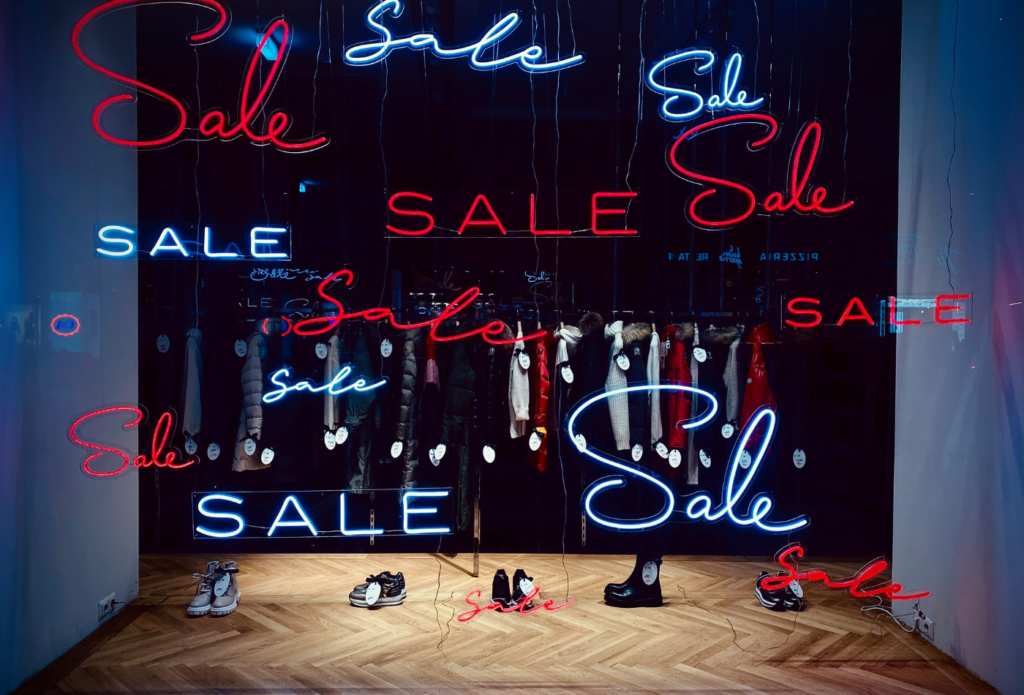
The fashion industry is expected to be valued at $880.9 billion in 2025, with a projected annual growth rate of 7.65% from 2025–2029. To put that figure into perspective, someone with that kind of money could spend $1 million every day and continue doing so for 2400 years. The money aside, it’s pretty tricky to visualise just how big this industry is. But when 430 million people across the globe work in fashion – that’s more than the entire population of the US and UK combined – you get a good idea of the sheer size of it. Within this industry, there are thousands of brands, from independent names and high-street staples to luxury labels and business apparel manufacturers. But at the heart of these subsectors, you’ll find a shared goal: to make sales.
To make an informed purchase decision, 88% of online shoppers consider product content an integral factor in their purchase decision process. Digital marketing for fashion brands is on the minds of all entrepreneurs and CMOs, no matter how big or small their company is. But navigating the vast plains of fashion digital marketing can be pretty daunting when it’s a scene that changes as frequently as trends emerge and algorithms update. In this fashion digital marketing guide, we dive into our top strategies, channel tips and campaign examples to help you steer the ship in 2025.
What does the fashion industry look like in 2025?
Economic, political, and climate concerns have shaped much of the last few years, 2024 followed the same course, and 2025 is likely to be similar. Despite this, the fashion industry has been resilient; it continues growing steadily as business leaders adapt to changes and pinpoint new opportunities.
So, what will drive any successful fashion brand in 2025? The answer is pretty clear: innovation.
New sustainability standards shape production and processes, generative AI will transform the tools fashion companies rely on and establishing how brands communicate with their customers in the fast-moving online world is a priority.
The latter comes with a great deal of uncertainty. Written in the eighth annual State of Fashion report by The Business of Fashion and McKinsey & Company, fashion executives have noted that consumer confidence remains fragile amid rising prices and the looming climate crisis. Inaction is no longer an option; consumers want brands to hold themselves accountable.

Why do you need a digital marketing strategy?
So, what does this mean for fashion digital marketing?
When things cost more – for the majority – more consideration is taken before handing over our hard-earned cash. Consumers choose to support brands that care about the same things they care about instead of those who are less transparent about their business activities. They also want to buy products from fashion brands that consider their customers in their processes; customers expect authentic interactions, high-quality items and exceptional service every time. That’s what builds brand loyalty.
Digital marketing plays a significant role in shaping many of these interactions, including activities like content marketing, SEO, social media marketing, paid advertising, email marketing and influencer marketing. Each of these channels involves communicating with past, present and future customers. While some methods are used for telling customers about your brand or its values, others are used to sell your products.
Your choice of channels and activity should be dictated by a strong, data-driven digital marketing strategy to make sure you’re not just throwing away your budget.
A good fashion industry digital marketing strategy will:
- Keep you working toward your goals by providing measurable results
- Help you reach new audiences
- Offer a cost-effective marketing option
- Help you build your brand into one that is recognisable
- Increase customer engagement with your brand and products
But where do you start? We wrote a blog containing our top tips on creating a relevant digital marketing plan for all brands. But when it comes to the fashion industry, there are trends, content types and channels you can use to encourage more effective results from your marketing. The following section will dive into just that in detail.
Fashion industry digital marketing trends in 2025
Digital marketing covers any online marketing strategy, so trends change quickly. Here are a few worth noting:
Shopping from social media apps
Built-in social media shopping features have become increasingly popular over the last few years, with 76% of consumers admitting to using their favourite apps to make purchases. The spring-board growth of TikTok Shop in 2023 has only amplified this, with 27.3% of the platform’s users making purchases on the feature last year – a figure that has more than tripled in the previous three years.
So, what’s the deal with the TikTok shop? Integrated shopping features on social media allow customers to connect with highly engaged customers in as few steps as possible. You can tag products to your social media posts, and customers can check in the app. Paired with viral short-form videos and high-traffic trends, brands can reach more potential customers directly. It cuts out the middleman and can drive some impressive results.

Short-form video continues to take the lead
Following our last point, short-form videos continue to sit at the top of the content leaderboard in 2025. In 2023, 90% of marketers increased their short-form video budget as they saw 2.5 times more engagement than long-form videos and were more likely to go viral. In the fashion digital marketing sector, brands are using short-form videos to take us behind the scenes, showcase new product drops and do clothing try-ons and hauls. It’s fast-paced and high-volume. A few brands have even used TikTok to catapult their products into the wardrobes of platform users – look at Odd Muse, for example.

User-generated content is still on the mind
UGC creators are the latest buzzword on social media. People are quickly realising there is a market for content created by anyone other than a brand’s marketing team, and these fashion labels are hiring creators to create tailored videos and photos. UGC helps brands boost their brand authenticity and engagement. Honest reviews and in-action shots show off the features and benefits of products without the rose-tinted glasses worn by brand marketing managers. From outfit of the day videos to wish list shares, UGC is something we encourage in 2025.
Content needs to be interactive
Interactive content works by keeping users engaged. Outgrow notes that there are multiple benefits of interactive content. Not only can interactive content gain two times more engagement than static content, but it can also generate two times more conversions and five times more views. Types of interactive content that you could implement into your fashion digital marketing strategy include:
- Shoppable experiences
- Augmented reality
- Polls and surveys
- Quizzes and games
- 360-degree views
You need to shout about your values – and be transparent
94% of customers are influenced by how a company treats its customers, while 78% of brands take note of a brand’s environmental practices and values. Consumers want to connect with brands that make them feel good. It’s why luxury fashion brands like Prada and Chanel sit at the top of people’s wish lists. And it’s also why people shop with brands like Nike time and time again. All of these brands are vocal about what they believe in, and the quality of their clothes aside, it sets a clear image of who the consumer is and what is important to them, too.
Brands are thinking about AI
We’ve spoken about AI in content marketing a lot. And while we don’t recommend using it to create content without human intervention, there are various other ways you can implement AI tools into your process to improve your user experience. These include:
- Personalised shopping experiences
- Chatbots for customer interaction
- Visual search and image recognition
Your campaigns need to be inclusive
Lastly, accessibility and inclusivity are values all fashion brands should prioritise in 2025. There’s no excuse for alienating groups of people, and this is something the fashion industry as a whole needs to work on. To be inclusive in your fashion digital marketing, you need to unite people with things they have in common, highlight real stories, diversify your representation, empower your customers and ask for feedback. Listen to what your customers say, and don’t brush things under the rug if the conversation of inclusivity or accessibility begins.
What makes good fashion content?
Trends and technological advances will only take digital marketing for fashion brands so far. As a priority, you need to be able to create good fashion content. Here are our top tips:

Ensure consistent branding
The world’s top five most valuable brands are Amazon, Apple, Google and Microsoft. Putting their gigantic corporations aside, consider what these brands have in common. They have very consistent and very recognisable branding. Your fashion company’s branding can make or break a sale. Consumers want consistent imagery, purpose-driven activity and branded content. 77% of consumers prefer to shop with brands they follow on social media, and a recognisable social profile will make all the difference.
To ensure consistent branding across your entire digital marketing strategy, the fashion brand should:
- Create brand guidelines that cover logo, colour palette, typography and tone of voice.
- Share these guidelines with both your internal team and any external content partners.
- Implement these brand guidelines when creating any content.
- Create templates for social media graphics, specifying clear instructions for sizing placement and spacing of text and images.
Everyone has a little FOMO
Over 60% of consumers admit to making reactive purchases within 24 hours of experiencing FOMO. The fear of missing out is something instilled in all of us. If your favourite brand is running a 50% off sale, dishing out free shipping or offering limited-edition product drops, you can’t help but want to get in there. Using terms like ‘For 24 hours only’ or ‘Limited-edition’ will get your customers itching to buy something. Just make sure you can justify slashing prices before advertising deals to your community.
Think about exclusivity and personalisation
89% of marketers witness a boost in their returns when they incorporate personalisation into their campaigns. On top of this, 60% of consumers are more likely to shop from the same brand repeatedly when their shopping experiences are personalised. And even though we know most personalisation is some automation tool working overtime in the background, it’s pretty exciting when you get an exclusive discount code on your birthday or a free gift in your next order.
Listen to your community
Don’t know what to post? Start by looking at your audience. Either directly ask them about the kinds of content they want to see or use a social listening tool to find out. According to Commsor, some of the biggest challenges marketers face are understanding data, rising above the digital noise and reaching their audience. Listening to your social media community can help you solve these queries.
You need high-quality original imagery
Your fashion digital marketing strategy needs to incorporate high-quality visuals. Using imagery or videos to tell a story in fashion marketing helps retain your audience’s attention. It also allows customers to process information faster than reading text – 60,000 times faster, to be exact – making it more effective at communicating product collections. To create high-quality imagery, you should:
- Define the theme or concept for your shoot.
- Mood board your ideas to plan the look and feel of the imagery you hope to capture.
- Choose models or backdrops that fit the aesthetic of your brand.
- Plan and curate outfits that complement the overall concept.
- Use professional photography equipment – or ideally, hire a photographer.
- Pay attention to lighting, posing and composition.
- Use image editing software to enhance colours, contrast and sharpness.

How to use fashion digital marketing to boost your sales in 2025
Early on in this article, we established that digital marketing in the fashion industry covers a whole host of marketing methods and platforms. So far, we have covered how to create innovative content suitable for fashion brands. But how does this translate into the various platforms or avenues available to us marketers? Here’s how:
Create an SEO-optimised brand website
First and foremost, your fashion brand needs a well-written, SEO-optimised website. It needs to be built for the user, available on all devices, easy to navigate and contains everything a customer may need to make a well-informed purchase. This is why:
- It takes about 50 milliseconds for users to form an opinion about your website that determines whether they like your site or not.
- 61% of users are unlikely to return to a site on mobile if they have trouble accessing it.
- 38% of people will stop engaging with a website if the content or layout is unattractive.
So, to create an effective website that is loved by your customers and ranks in Google, you need to:
- Implement clear navigation that is logical and intuitive.
- Design your site to be responsive across various devices and screen sizes.
- Optimise images to ensure they don’t negatively impact page speed.
- Choose readable fonts and appropriate sizing.
- Design with accessibility in mind and use descriptive alt text for images.
- Avoid clutter and prioritise a clean, minimalistic design.
- Maintain consistent branding.
The words you publish on your site must also be SEO-optimised. We published a free SEO Survival Kit, which you can download here. But at a glance, to optimise your site’s content for search engines and perfect your fashion SEO strategy, you should:
- Conduct thorough keyword research to identify relevant, high-traffic keywords using tools like Google Keyword Planner.
- Create clean and descriptive URLs that include relevant keywords.
- Write compelling, keyword-rich title tags for each page.
- Write concise and engaging meta descriptions to encourage click-throughs.
- Use header tags to structure your content.
- Distribute your keywords well across your site’s content, including the title, subheadings and the body of the text – but don’t overdo it.
- Use internal links to other pages on your site.
- Use external links to valuable data sources and resources published by other sites.
- Regularly update your content to keep it fresh and relevant.
Write strong product descriptions for your product listings
Up to 99 per cent of marketers agree that quality product content is essential for eCommerce success. Yet, despite this, many brands overlook their importance, rely on generic content from manufacturers or use AI to create a bland, robotic copy. Your product descriptions need to:
- Use clear and concise language.
- Contains detailed product information, including materials, sizing and care instructions.
- Emphasise the product’s benefits to the customer and how it meets a specific need or solves a problem.
- Incorporate storytelling to create an emotional connection with the customer by letting them visualise what it would be like to wear your brand’s clothes.
- Frame the product from the customer’s perspective and answer any reservations they may have.
- Include relevant keywords naturally in the product description – don’t crowbar them in or write non-grammatically.
- Use a captivating headline that summarises the key selling points.
- Include a clear and persuasive call to action, prompting the customer to add the item to their shopping cart.
- Incorporate customer reviews or testimonials to build trust.
- Suggest how the product can be styled or paired with other available items on your site.
- Include a variety of product shots of the item.

Establish and maintain a consistent social media presence
Next, you need to be active on social media. Read this previous blog on creating a social media marketing plan. It will give you a good idea of how to kickstart your presence on these social platforms. The key with social media is that you have to experiment. Trends come and go, audience interests change, but you need to be willing to step out and make noise. A study from Harvard Business Review showed that marketers who run at least 15 experiments a year see a remarkable 30% to 45% increase in performance. To make a splash on social media, you should:
- Find a regular posting schedule that works for your brand and stick to it.
- Diversify your content formats, from short-form videos to UGC.
- Don’t be afraid to kill ideas that don’t work – the long game isn’t always a winner.
- Use paid ads to target customers and promote high-performing content.
- Work with influencers to maximise reach – but ensure it’s an authentic pairing.
- Stay on top of algorithm updates and changes – sign up for our newsletter.
- User content teasers and countdowns to generate excitement.
- Ride trends, be strategic with your timing, and offer moments of interactivity.
Build a mailing list and send regular newsletters
Last but not least, you need to build your mailing list. If social media vanished tomorrow, how would you stay in contact with your engaged community members? To develop and maintain your mailing list, you need to:
- Create a sign-up form that is easy to use and placed in a prominent position(s) on your site.
- Offer incentives to sign up, such as discounts, exclusive content or access to special promotions or products.
- Share links to your sign-up from across your social media channels.
- Ask to opt-in customers when they make a purchase.
- Segment your list based on demographics, preferences, or behaviours.
- Send targeted content to each segment for increased engagement.
- Send valuable, structured content regularly, A/B testing various email features for maximum return.
Examples of successful fashion industry digital marketing campaigns
Which brands are putting this into action? Here are three fashion brands acing their digital marketing:

JACQUEMUS
Luxury brand JACQUEMUS recently launched their first mountain shop in Courchevel toward the end of last year and in their true marketing style, Creative Director Simon Porte and Yoann et al published a selection of short-form videos to advertise the opening.
Ranging from a Christmas tree skiing down the resort on branded JACQUEMUS skis to Le Chiquito bags on a conveyor belt, the brand’s creative & marketing team was highly praised for their innovative, creative direction. Take a look at the video here.

Lounge Underwear
In October of last year, Lounge Underwear launched its annual #Feelyourbreast campaign, and it broke the internet. Posting across their social media accounts, Lounge Underwear announced the campaign alongside a promotion where customers can get two free thongs when they spend £40 or more. The social media campaign was accompanied by images of women proudly wearing the brand’s signature pink thong.
Photographing over twenty women, the series of images celebrates women of all shapes and sizes. There are plus-sized women, women of colour, women with visible scars and a woman with a stoma. These images are empowering, and this entire campaign is a prime example of putting your values into action. It’s proof that this brand really cares about its values, and fashion brands need to take note.

Nike
Nike has a long history of memorable and emotive ads. It started with a simple ‘Just Do It’ and continues to evolve into a lot more. This ad featuring Colin Kaepernick won the award for Outstanding Commercial at the Creative Arts Emmy, and the digital marketing campaign that supported it was just as poignant. Encouraging its customers to ‘dream crazy’, this piece of fashion industry digital marketing reminds consumers what you can achieve when you embody Nike principles, buy their products and ‘just do it’.

Need a hand with your fashion digital marketing and content marketing?
Since 2005, we have been the first-choice fashion copywriter for many international and luxury fashion brands. We’ve written millions of words that have helped our clients achieve better rankings and more sales. Our copy is top-notch, and so is our turn-around time. To find out more about our fashion copywriting service, get in touch.
